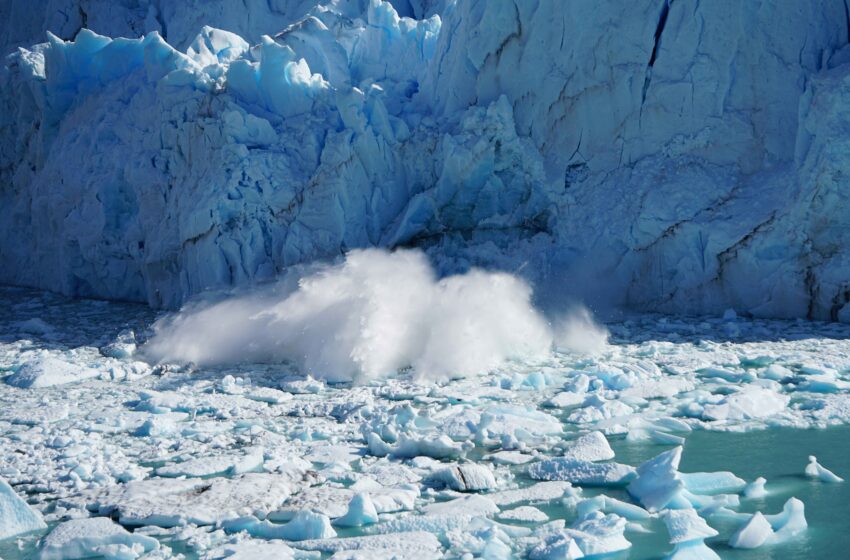
How Antarctica’s Ice Collapse May Be Slower Than Feared
Antarctica has long been a focal point for scientists concerned about the impacts of global warming. The West Antarctic ice sheet, in particular, has been seen as one of the most vulnerable and potentially catastrophic elements of climate change. For nearly a decade, climate experts have grappled with a doomsday scenario where the ice sheet could collapse rapidly, leading to significant sea-level rise and dire consequences for coastal cities around the world. However, a recent study published in Science Advances offers some unexpected hope, suggesting that the worst-case scenario may be less imminent than previously thought.
The Doomsday Scenario: Ice Cliff Instability
The most alarming prediction involved a process called ice cliff instability. The theory posits that once the floating edges of the ice sheet melt away, the remaining cliffs would be so tall and steep that they would inevitably begin to collapse. This process would lead to a chain reaction, with ice chunks breaking off continuously, triggering further collapses. In such a scenario, the West Antarctic ice sheet could contribute more than a foot to global sea-level rise by the end of the century, assuming that greenhouse gas emissions continue unchecked.
This hypothesis was taken seriously enough to be included in the United Nations’ latest climate assessment as a “low-likelihood, high-impact” scenario. The potential consequences of such an event would be catastrophic, putting major coastal cities at risk and disrupting ecosystems across the globe.
New Findings: Ice Cliff Collapse May Be Less Likely
In the new study, researchers led by Mathieu Morlighem, a professor of earth science at Dartmouth College, conducted computer simulations that challenge the inevitability of this disastrous sequence of events. The study focused on the Thwaites Glacier, one of the most unstable and rapidly receding glaciers in Antarctica. The researchers tested two worst-case scenarios: one in which the glacier’s ice shelf (its floating edge) completely disappears today, and another where it vanishes by 2065, allowing the glacier to retreat further inland.
In both cases, the simulations showed that the glacier’s ice began flowing more quickly into the sea once the ice shelf was removed. However, this rapid flow prevented the formation of the extremely tall ice cliffs that would be necessary for a runaway collapse. Essentially, while the glacier’s disintegration accelerated, it did not lead to the catastrophic chain reaction that many had feared.
Understanding the Implications
While the study’s findings offer some relief, they do not suggest that the world is out of danger. As Dr. Morlighem pointed out, “The Antarctic ice sheet is going to disappear; this is going to happen. The question is how fast.” The speed at which the ice disintegrates is crucial, as a slower process would provide more time for coastal communities to adapt, either by building defenses or relocating inland.
Despite the new evidence, there is still considerable uncertainty surrounding how ice behaves under stress. Ice dynamics are complex, and scientists need more data to fully understand how ice cliffs fracture and collapse. Factors such as the strength of the ice, the presence of liquid water within the ice, and the damage it sustains as it moves from the interior of the continent to the ocean all play critical roles in determining how quickly the ice sheet might break apart.
The Ongoing Challenge for Scientists
Several researchers not involved in the study have emphasized that while the findings are encouraging, they are unlikely to be the final word on the matter. Rob DeConto, a professor of earth, geographic, and climate sciences at the University of Massachusetts Amherst, stressed the importance of grounding models in real-world observations. “We need a better understanding of how ice behaves when it fractures,” DeConto noted.
Richard Alley, a professor of geosciences at Pennsylvania State University, echoed this sentiment. He highlighted the difficulty of capturing real-time data on ice collapse, as these events can happen quickly and without warning. “The data we are getting now are not sufficient,” Dr. Alley said, underscoring the need for more comprehensive observations.
Given the stakes—both in terms of human lives and economic costs—there is immense pressure on scientists to improve their models and provide accurate projections. Coastal cities around the world, many of which are major economic hubs, rely on these projections to plan for the future. If sea levels rise faster than expected, the costs of adaptation could skyrocket, putting enormous strain on global resources.
A Complex, Ongoing Battle Against Climate Change
The recent study offers a glimmer of hope in the fight against climate change, suggesting that the worst-case scenario for West Antarctica’s ice collapse may be less imminent than feared. However, it also serves as a reminder of the uncertainties that still exist in our understanding of ice dynamics. The findings highlight the need for continued research and data collection to refine projections and better prepare for the impacts of global warming.
While the collapse of the West Antarctic ice sheet remains a serious concern, the timeline may be longer than initially thought, providing a crucial window of opportunity for action. As the world grapples with the challenges of climate change, this new evidence underscores the importance of sustained scientific inquiry and global cooperation to mitigate the risks and protect vulnerable communities.





